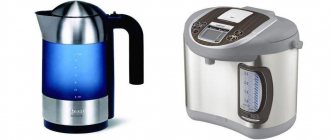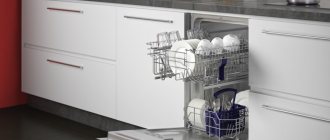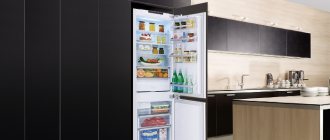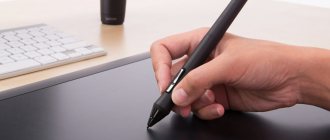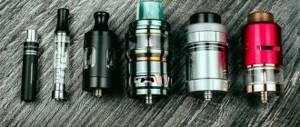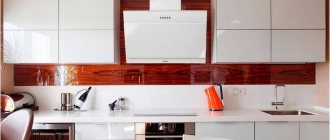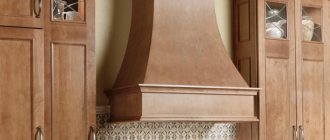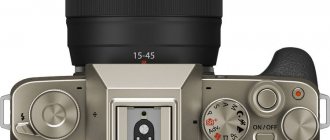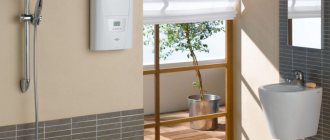Tripod for camera may be useful not only for professionals.
Even a simple social media avatar can be made better by eliminating the fuzziness that occurs due to natural hand tremors.
In addition, a tripod allows you to take a family or group photo without sacrificing one of the family or team members.
People who are far from photography are ready to go to the store and buy the first tripod they come across, but this is not worth doing: the devices differ in size, installation method, material and other parameters.
Therefore, it is better to familiarize yourself with the variability of this device and make an informed choice.
Rating of the TOP 14 best tripods for cameras
| Place | Model | Price |
| Best Large Tripods | ||
| #1 | HAMA Star-63 (04163) | |
| #2 | HAMA Star-64 (04464) | |
| #3 | HAMA Delta Duo 170 (04098) | |
| #4 | Rekam E-155 | |
| #5 | HAMA Action 165 3D (04095) | |
| #6 | Manfrotto MKCOMPACTLT (Compact Light) | |
| The best monopods | ||
| #1 | Manfrotto MMCOMPACT (Compact Monopod) | |
| #2 | GoPro ASBHM-002 | |
| #3 | FUJIMI FM103 | |
| #4 | Manfrotto MVMXPRO500 | |
| #5 | FUJIMI FM222V | |
| Table tripods | ||
| #1 | HAMA Flex 2in1 (04314) | |
| #2 | Joby GorillaPod 1K Kit | |
| #3 | Joby GorillaPod 3K Kit | |
Page navigation:
TOP 3 best monopods
No. 3. HAMA Star-78 Mono (04178)
The level allows you to align the camera along the horizon line. The kit includes a case and a swivel head. When transporting, the monopod has a height of 61 cm. The supports are equipped with rubber tips, making the tripod stable even on slippery floors. The aluminum alloy body is durable and will not be damaged if dropped.
HAMA Star-78 Mono (04178)
pros
- affordable price;
- rotating tower;
- no backlash at the rack.
Minuses
- The plastic head needs careful use, as it can quickly become unusable.
No. 2. Rekam RM-120
Another inexpensive mono tripod, extends to 171 cm. Can be used with cameras weighing up to 3 kg. Ease of use is ensured by a handle made of ergonomic foam. An excellent option for shooting at various public events, where the frame composition point should be located above their heads.
Rekam RM-120
pros
- the tripod quickly unfolds to working condition;
- there is a convenient cord for your hand;
- ease of use;
- light weight.
Minuses
- When unassembled, the monopod is long.
No. 1. Manfrotto MMCOMPACT (Compact Monopod)
Compact model with a comfortable handle with a rubberized anti-slip surface. The weight of the tripod is 330 g. A universal mount is provided for cameras, which is additionally equipped with a special cover. The wrist strap eliminates the risk of accidentally dropping the camera. Available in several eye-catching colors.
Manfrotto MMCOMPACT (Compact Monopod)
pros
- the height is quite enough to shoot at full height;
- The optimum ratio of price and quality;
- the knees are securely fixed in the clamps.
Minuses
- Only small digital cameras and lightweight video cameras can be used.
Types of tripods and their features
Important! There are several types of tripod designs that determine the features and scope of the “stand”.
- Monopods. Simple, reliable, mobile, designed mainly for shooting dynamic events (for example, sports competitions). They are inexpensive and allow you to quickly place the camera in the desired position, but do not provide full stabilization of the camera.
- Tripods. They consist of 3 legs, respectively, have 3 points of support and provide more reliable stabilization of the camera. They are quite heavy and large, but are perfect for cases where you need to shoot for a long time while holding the camera in the same position.
- Tabletop compact tripods. Devices whose name speaks for itself. These are miniature and lightweight tripods for placing on any flat surface (for example, on a table or windowsill) and then placing cameras on them.
- Tripod-clothespin. It has a flexible base and is therefore suitable for compact cameras and smartphones. The clamp is made in the form of a spring clip, which securely holds the device between the mounts and allows you to take both classic and selfie shots. Between the clothespin and the place for fixing there may be an extension rod, a hinged or flexible (elastic) base. Depending on this, you can take photographs at different distances from the object and at different angles. This type of tripod is suitable for creating content using a selfie camera, for example, for beauty bloggers.
- Clamp stands. They are fixed in a horizontal view almost motionlessly using special clamps and allow you to create clear photographs with ideal boundaries of objects. If the model is equipped with a rotating lock, pictures can be in both portrait and landscape orientation.
Choosing a tripod for video
If you take the process of shooting video seriously, then sooner or later you will wonder what kind of tripod to buy for your camera. Tripods are just as important as the camera itself, but unfortunately tripods often don't get as much attention when budgeting.
A tripod is an important working tool in video filming. Quality tripods do more than just keep your camera in a fixed position and help you avoid so-called camera shake. They also allow you to improve the composition of the frame, maintain the desired angle, and provide smooth panning and camera rotation.
A tripod (tripod, tripod) is usually a device with three legs that holds the camera in a fixed position. Tripods come in a variety of sizes, shapes, features, and uses. Tripods are classified by head type, material type and other characteristics.
Tripod head
The tripod head is the “steering wheel” of your camera. This is the most important thing you need to consider when choosing a tripod. Sometimes it makes sense to spend more money on buying a high-quality head, and buy the “legs” themselves with whatever is left.
On the market there are ball heads (ball joint - convenient for turning in photography), 3D heads (consisting of several hinges - convenient for fixed photography) and panoramic heads.
A panoramic head (fluid head) is exactly the type of head that is needed for shooting video. Because they use fluid to overcome resistance more smoothly, they are sometimes called "fluid" or "hydraulic" heads.
You shouldn't buy a ball head if you're hoping to shoot beautiful panoramic shots. It is absolutely not designed for panoramic shooting and will only disappoint you. It’s better to postpone the purchase until better times and choose a more suitable option with a panoramic head.
Good panoramic heads make it possible to properly balance the camera and achieve smooth movement. More expensive heads are needed, for example, for panoramas at long focal lengths, for macro photography or reportage shooting of panoramas. They also weigh more.
The Manfrotto 501HDV head is one example of a relatively inexpensive tripod head that can often be found among "walk-and-shoot" operators. This head generally copes with its tasks, but in comparison with more expensive and professional heads it has its drawbacks. The movement is a bit sticky and you can't balance the camera.
Professional operators place more trust in, for example, tripod heads from Sachtler. Unlike the previous example, the quality of the legs and the head itself of these tripods is an order of magnitude higher, but the price is corresponding.
The resistance level in advanced heads can be adjusted. The Sachtler FSB-8 and DV-10SB heads allow you to set 5 steps of resistance in both pan and tilt. The required resistance value corresponds to the ratio of the weight of the rig to the speed of the required camera movement.
Before setting up, you must set the head level correctly. Positioning the camera parallel to the ground will give a natural composition and balanced panning. Leveling adjustment, for example, in Vision 3AS is displayed using a special blue backlight.
If you're shooting with a shoulder-mounted camera, the rig is more balanced in a horizontal position. If you start to tilt the camera, it will become harder to hold the rig and maintain a stable position. Although the weight of the camera has not changed, the load torque during tilting increases. The rotation and tilt of the tripod head have similar physics. If the camera is positioned unbalanced, there is a risk of the structure toppling over, or at least turning the head leads to jerking and rough movement.
To remedy this, professional tripod heads often use counterweight systems to keep your camera, lens, recording equipment and other equipment with a balanced center of gravity. Therefore, if your camera is equipped with a lot of equipment, then it is better to use a head with a counterweight.
The Vision AS system has the necessary torque - Perfect Balance technology allows you to maintain focus at the desired angle for a long time. This is especially important for studio cameras, but can also be useful for shooting on a DSLR with a telephoto lens.
Tripod legs
Legs are selected based on the weight of the camera and equipment, and come in various configurations. It is advisable to take tripods with a removable platform in case you suddenly want to use your own monopod head. The legs consist of folding sections, and one of the parameters is the number of these sections. The two-stage tripod consists of 3 sections. Obviously, the fewer sections, the more stable and durable the tripod will be. On the other hand, multi-stage tripods are compact, portable and can be carried, for example, with a backpack. There are legs made in the form of 2 parallel tubes, which gives additional strength.
When choosing a tripod, it is very important to consider what load it can withstand and how many kg of weight is maximum permissible. You need to understand what tasks you will need a tripod for. If the use is regular, then the durability of the equipment is important. In some cases, criteria such as lightness (to be carried in the hands) and heavy weight (to be durable and stable) are important. Remember that you may change equipment over time. Today you shoot with a Canon 7D, and in the spring you will want to take a Sony CineAlta, and you need to plan and find a tripod that can support that weight. The Sachtler 0775 FSB-8 (with FSB-8 head) has a 10-speed counterweight system and supports 9 kg of weight.
Another parameter is the maximum and minimum height of the camera. The single-section Vinten V3AS-AP1M (with Vinten AS head) has parameters from 81 to 161.5 cm. Sometimes it makes sense to take several types of legs with you. The 529 Hi Hat from Manfrotto offers a range from 14.4 to 19.5 cm, with a 100mm bowl. For operators who need something higher than this, there is, for example, the Gitzo GT-5561SGT with a range of 17-71 cm. This will require a suitable adapter for mounting a tripod head. Gitzo offers 75mm and 100mm options.
Size matters. The working tripod should not be waist-high to the operator; it is desirable that it reaches eye level. And if you are choosing a compact tripod, do not forget that you need to take into account the size of your head.
A useful feature is the presence of an inverted column - a central section between the supports. In addition to the fact that it allows you to raise the camera higher, when inverted, this design allows you to place the camera near the ground, which is convenient for macro photography. However, such columns are rare in professional videography.
In some cases, to increase the stability of the tripod, additional weight is used (in the simplest cases, for example, a backpack), which clings to the hook of the central column and shifts the center of gravity lower.
Modern tripods are made from various materials. In budget tripods, the main material is plastic; handles, platforms, heads and clamps are made from it. But plastic can be different, and in the budget case it is a creaky material that has quite a lot of play. Aluminum tripods are also used, which are quite light and cheap. And they perform their main function normally. But aluminum is cold, weakly dampens vibrations, and is subject to deformation.
More expensive professional tripods are made of carbon fiber, which is lightweight and durable. Can withstand more weight. They also use higher quality and more durable plastic. Carbon heats up and cools down more slowly (if you suddenly want to shoot at the North Pole or in a hot desert). CFRP will last longer and require less repair. In some extreme cases this plays an important role. Aluminum and carbon tripods are often used for reporters' cameras due to their compactness and light weight. And steel and all-aluminum structures are more often used in studios, where weight is not important, and the rigidity of the structure plays a decisive role.
Stretches, struts
Foot tips are generally interchangeable, and different materials may be used in different terrain. Rubber tips are needed for smooth surfaces, studded tips are needed for snow, ice, and loose soil.
For greater stability of the device, rigid “webs” can be added between the supports and the central rod of the tripod - spacers or stretchers, which also allow you to keep your legs in the desired position during panning. The Sachtler 7011 stretcher is designed for docking at mid-leg level, which is best used in location shooting. Mid-level braces are needed for stability on uneven surfaces and provide strength when a narrow foot position is required. Sometimes, for increased stability, loads are hung on spacers.
The lower stays connect the legs of the tripod at ground level. Often used in studio or reportage photography. For example, Vinten 3363-3.
—
If we talk about tripod manufacturers in general, budget models Velbon , Vanguard , Slik and Libec , the semi-professional segment is Benro , Gitzo and Manfrotto , while professional operators prefer tripods from Vinten , Cartoni and Sachtler .
Cheap tripods can mainly be used for DSLR cameras, where the weight is small, up to 2-3 kg, and the load on both the head and the legs themselves is low. And, as a rule, these tripods are used by beginners or people for whom the issue of perfect panning is not in the first place. No matter how much money your tripod costs, it's helpful to know a few tricks to use with them: one, two, three.
Upgrading to professional tripods can improve the quality of your work faster than any other piece of equipment. In most cases, the right tripod is as important as the camera itself. From static shots to panoramas and rotations, tripods give you the tools for a more refined visual language and improve camera angles in every case.
How much money to spend on a tripod? Experts recommend allocating up to 25% of the budget of all filming equipment to it. If you're a professional videographer, you won't regret it.
Other options
There are many types of tripods on the filming equipment market that are used in special cases and for less money.
A monopod (unipod) is a type of tripod that has only one support instead of three. The main advantage of a monopod is mobility, the ability to move faster and choose suitable angles. There is some motion in the monopod video, but the result is noticeably better than handheld footage. For greater stability, the operator's legs can be used as a second support. It is more convenient to film rotations with a monopod, and with some skill it can be used for runs, smooth “flight” and other tricks with the camera.
There are monopods like Manfrotto 561BHDV-1 with a lower strut, which allow you to fix the position of the monopod vertically without holding it with your hands. About the possibilities of using monopods, watch the video once or twice.
Mini tripod . A pocket-sized tripod, it can be used to place your camera (phone) on a table or other support you have at hand. They are very small in size and weight, around 10 cm and 50 g.
Gorillapod is an interesting version of a tripod with an articulated design. Gorillapods are made up of more than 30 flexible joints. The main application is to mount DSLR cameras to various supports on almost any surface, such as wood or pipe. Rubberized tripod bases prevent slipping and provide stability. Convenient for documentary shooting and in extreme cases.
What tripod are you using? Share your opinion on choosing a tripod and its use.
What parameters should you pay attention to when choosing?
When choosing a tripod for a camera, first of all you should take into account the type of design discussed above.
Note! Once the choice of tripod type has been made, you need to pay attention to other characteristics:
- Weight and dimensions. For photographers working in a studio, they are not so important, but for travel photographers or bloggers they are perhaps the key parameters. Lightweight and compact tripods are transportable and suitable for travel.
- Material. The material of the tripod determines its main characteristics. Thus, carbon tripods are lightweight and dampen vibrations, while aluminum models are heavier and more stable. When it comes to plastic, it is important that the main elements (for example, the tilt adjustment screws or camera clamp) are made of high-quality material, such as chrome or steel.
- The number of “legs” of a tripod , which are also fulcrum points and determine the reliability and stability of the camera.
- The diameter of the legs and the working height range of the tripod. For some photographers, for example, it is important that the tripod can be extended for full-length shooting.
- The quality of the attachments on the legs (spikes or rubber tips).
- The method of adjusting the clamp is the head to which the camera is attached. There is ball regulation, 2D and 3D. The first type allows you to quickly and accurately adjust the position of the camera. The second - in the horizontal and vertical planes, the third - horizontally, vertically and to the side.
Which tripod should you choose?
Now that you are familiar with all the criteria for choosing a quality tripod, you are probably wondering what kind of tripod you will need to purchase to meet your photography needs.
Since I have personally experienced all the delights of choosing, purchasing and using various tripods, and am familiar with the considerable experience of other photographers in this matter, let me tell you about what many photographers end up with.
They first look at the cheapest tripod available, thinking that it will be enough to mount their first DSLR, and having no idea whether they really need a tripod or how often they will use it.
Such a tripod will cost between $75-$150, which is quite acceptable for an entry-level tool like this.
Then photographers purchase larger, heavier lenses, which puts more strain on their existing tripod. At this point, photographers realize that cheap tripods are not good enough and they need something more stable and durable. Having realized the mistake of buying a cheap tripod, they begin to approach the issue of choosing a tripod more carefully. They spend hours on various websites and forums searching for information about tripods. But despite all the recommendations from the pros, they are still not ready to invest in a professional-grade tripod. As a result, they opt for a modular tripod with a good ball head, with a total cost of 300-500 dollars. It seems to them that they have found a middle ground and the new tripod is much better than the previous one.
But after a year or two, photographers again realize that their new tripod is not so good because it is too heavy and awkward to use, especially outside the studio or when traveling.
As a result, our unfortunate photographers again have to buy a tripod, this time fully complying with the recommendations of professionals. This may not be relevant in every case. But I personally went down this road of mistakes and wasted a lot of effort and money.
Other photographers may have a completely different story. They were able to purchase an inexpensive tripod and are still willing to use it to this day. This may indicate that they do not use their tripod very often, but for occasional use it is completely satisfactory for them.
Anyone who relies on a tripod (especially in landscape and architectural photography) tries at least 2-3 different tripods before finding the best one for them.
Avoiding buying multiple tripods seems to be a difficult task because for someone who rarely uses it, the worth of investing in an expensive tripod is extremely difficult to accept. If someone had told me when I started photography that I should spend more than $500 on a tripod, I would never have believed him - that's too much money to spend on a tripod!
But in fact, it turned out that way and my expenses on the way to a good tripod amounted to much more than $500, so honestly, I wish I could go back in time and buy a quality tripod from the very beginning.
If I recommended to someone who just bought their DSLR camera to buy a tripod for $800-$1200, I would probably hear back: “You're crazy!” And no matter how well and convincingly I would tell the story about my bitter experience of choosing a tripod.
So, here's what I recommend:
If you don't currently have a tripod and want to buy one, buy the cheapest aluminum tripod with a built-in head under $150. Why do I recommend the cheapest tripod? Because first of all, you will need to understand how often you will use it. After six months, you will be able to understand whether you are interested in a genre of photography that does not require a tripod, or whether you have found yourself in landscape or macro photography. A cheap tripod will give you enough information to appreciate the real role of a tripod in your creativity.
If you already have a cheap tripod and want to buy something better, save a lot of money and avoid disappointment, find the courage to pass on the mid-price segment offers. Some people save money on buying legs and heads but eventually find them too heavy or unstable. Others are faced with the fact that inexpensive heads do not fix the removable pads firmly enough, which becomes noticeable when the camera is rotated, and turns panoramic shooting into a complete nightmare.
Best Large Tripods
Large tripods can be useful in both studio and street photography, as well as when recording reports.
Rating of the best tripods for large cameras based on customer reviews and ratings.
HAMA Star-63 (04163)
Height adjustable floor tripod from 66 to 166 cm with 3D adjustable head.
The model is designed for photo and video recording equipment weighing up to 4 kg.
It has a built-in head that is adjustable horizontally and vertically and tilts sideways, rests on 3 legs and has rubber support tips.
The tripod is made of aluminum and is characterized by ease of assembly and high quality materials.
Specifications:
- height: 66-166 cm;
- Max. load: 4 kg;
- weight: 1.74 kg;
- number of legs: 3;
- rod diameter: 26.7 mm.
Advantages
- price;
- quality of materials;
- head adjustable in all planes;
- case included;
- sustainability.
Flaws
- no phone attachment;
- long handle;
- tight adjustment.
HAMA Star-64 (04464)
Two-tone stable tripod with 3-axis head, bag hook and built-in level.
A reliable device made of aluminum alloy, designed for fixing equipment weighing up to 4 kg.
The tripod is easy to install on almost any surface, securely fixed and quickly adjusted thanks to the adjustable head.
The kit includes a replacement pad. The screw size for the tripod socket is 1.4 inches.
Specifications:
- height: 69-185 cm;
- Max. load: 4 kg;
- weight: 1.66 kg;
- number of legs: 3;
- rod diameter: 26.7 mm.
Advantages
- build quality;
- ease of installation;
- camera lift height range;
- light weight;
- design.
Flaws
- plastic support locks;
- unstable (especially during wind);
- poor head mobility.
HAMA Delta Duo 170 (04098)
Stable, reliable tripod with a height of 62 to 170 cm, a built-in level and a maximum load of 4 kg.
The aluminum alloy floor tripod is suitable for fixing photo and video cameras weighing up to 4 kg.
A distinctive feature of the model is the versatility of its legs, due to which it can be placed on any surface.
The device has a built-in level and an adjustable 3D head.
Specifications:
- height: 62-170 cm;
- Max. load: 4 kg;
- weight: 1.85 kg;
- number of legs: 3;
- rod diameter: 26 mm.
Advantages
- different types of tips included;
- convenient case;
- build quality;
- height adjustment range.
Flaws
- unreliable fixation of the device;
- heavy;
- cannot be used as a monopod.
Rekam E-155
A lightweight and inexpensive tripod for beginner photographers with a shooting height of up to 155 cm and a small (59 cm) folded height.
The compact device for installation on the floor has three stable legs and rubber tips included.
Height adjustment ranges from 56.5 to 155 cm, and the head is 3D adjustable.
The model is equipped with a bag hook, a built-in level and a lifting mechanism. Replacement pad and storage case included.
Specifications:
- height: 56.5-155 cm;
- Max. load: 4 kg;
- weight: 1.19 kg;
- number of legs: 3;
- folded length: 59 cm.
Advantages
- good altitude range;
- light weight;
- case included;
- built-in level;
- High quality camera clamps.
Flaws
- unstable;
- when folded, it takes up a lot of space;
- tight head movement.
HAMA Action 165 3D (04095)
Aluminum 3D tripod with spiked legs and rubber tips included at an affordable price.
The black floor tripod has a solid appearance and reliable aluminum rods, as well as fasteners made of high-quality plastic.
Height adjustment is possible in the range from 61 to 165 cm. The maximum load is 4 kg.
The kit includes a 3D head, a replacement pad and a case.
Specifications:
- height: 61-165 cm;
- Max. load: 4 kg;
- weight: 1.32 kg;
- number of legs: 3;
- rod diameter: 23 mm.
Advantages
- metal base;
- ease of use;
- camera fixation strength;
- price;
- smooth adjustment of the head.
Flaws
- build quality;
- there is some play in parts;
- no phone attachment.
Manfrotto MKCOMPACTLT (Compact Light)
Laconic, durable and lightweight tripod with a ball head in two colors.
The miniature tripod weighs less than 1 kg and comes in red and black colors and comes in a convenient case for storage and carrying.
Some elements are made of impact-resistant plastic, and the main parts are made of aluminum.
The system of rapid movement of the central rod and the ball head allow you to precisely adjust the camera for shooting at the maximum possible proximity to the object (including macro photography).
Specifications:
- height: 39-131 cm;
- Max. shooting height: 103 cm;
- Max. load: 1.5 kg;
- weight: 0.92 kg;
- number of legs: 3.
Advantages
- compact;
- easy;
- quickly folds and unfolds;
- entirely made of aluminum;
- possibility of turning over the central rod.
Flaws
- plastic tips of supports;
- no removable platform;
- The maximum shooting height is only 103 cm.
Best Floor Standing Tripods
Benro A550FHD2
The aluminum alloy model from Benro with a 26 mm diameter rod can withstand a weight of up to 6 kg, making it suitable for use by professionals. The photo accessory itself weighs only 2.12 kg. The dual-handed 3D-grade head is detachable and comes complete with a tripod and allows you to hold the camera while rotating it in three different planes. The maximum height of the tripod when unfolded is 155.9 cm. This is simply ideal for architectural and landscape photography.
Advantages:
- Ease;
- Reliability and stability thanks to four sections in the boom;
- Full set: head, case;
- Supports vertical shooting.
Flaws:
- Price from 10 thousand rubles.
Beike Q-999
A good tripod for SLR cameras (Canon, Nikon) shoots at a height of a maximum of 1.6 m. The minimum frame fixation height threshold is 45 cm. The product with a ball-type head can support equipment weighing up to 15 kg, but itself has an incredibly modest weight of 1.49 kg . Thanks to the removable design, the photographer has the opportunity to quickly change the head, which is included in the package.
Advantages:
- Lightweight due to manufacturing from aluminum alloy;
- Built-in level;
- Quite compact folded length – 43 cm;
- Rich basic equipment;
- Wide range of leg parameters settings.
Flaws:
- Cost from 8 thousand rubles.
Manfrotto MKCOMPACTACN (Compact Action)
The floor tripod of this brand has a more reasonable price for a model in its class. The product looks stylish thanks to the spectacular color combination. Its low weight makes the model ideal for outdoor photo shoots or travel: the 1.165 kg tripod easily fits into any backpack.
Advantages:
- Compact dimensions and lightness;
- Height;
- Stylish design;
- High-quality assembly of legs.
However, in reviews of the model there are also a number of criticisms regarding the characteristics of the tripod.
Flaws:
- Head play in some modes;
- Small lever for changing shooting direction.
Velbon EX-640
Among the floor-standing versions, this model has the largest height - 170 cm. A camera weighing up to 5 kg is securely fixed to the replaceable unit. The EX-640 is complemented by an important option: the mechanism for lifting the central rod smoothly changes the height of the tripod, which makes working with a heavy camera extremely comfortable.
Advantages:
- Availability of a lifting mechanism;
- Average price segment for its category;
- Reliable camera hold;
- Simplicity and speed of disassembly;
- Flexible settings.
Flaws:
- Tangible weight (3.7 kg).
Rekam ZET-90
The modification from Rekam is distinguished by its unpretentiousness and stable operation on unstable soil, such as sand. The basic kit contains a removable 3D head, a case, a built-in level detector, and a hook for attaching a weight.
Advantages:
- Optimal balance of cost, configuration, quality.
- Professional appearance.
- Availability of a compass.
- Height.
- Build quality of elements.
- Maintaining a vertical position of the camera.
Flaws:
- Small range of twisting legs.
- Dimensions.
Fancier WT-3717
The most budget option of floor modifications. But, judging by the positive reviews from real customers, the tall model (165 cm) attracts consumers not only with its inexpensive price. The product is made of high-quality and durable plastic and can withstand heavy cameras up to 4 kg. The soft movement of the head position is also suitable for use during video creation, which makes the WT-3717 universal.
Advantages:
- Price.
- Availability of a cover and hook for additional cargo;
- The presence of two liquid levels;
- Excellent assembly without play;
- Acceptable photography height for most users.
Flaws:
- There are complaints about the size of the case: the model hardly fits in the case;
- Essential height when assembled is 70 cm;
- Small eye level.
The best monopods
Monopods are no less stable than tripods, but they take up much less space both when disassembled and folded.
Manfrotto MMCOMPACT (Compact Monopod)
Lightweight, compact, budget monopod in four colors, weighing only 330 g.
A portable monopod with a working height from 39 to 145.5 cm is designed for shooting with cameras whose weight does not exceed 1.5 kg.
The model has an ergonomic handle made of high-quality material that is pleasant to the touch and a universal 1.4-inch mount.
The kit includes a wrist strap for easy operation of the device.
Specifications:
- height: 39-145.5 cm;
- assembled length: 39 cm;
- weight: 0.33 kg;
- number of boom sections: 5;
- Max. load: 1.5 kg.
Advantages
- compact;
- easy;
- quality materials;
- ease of assembly;
- price.
Flaws
- flimsy assembly;
- camera weight is limited to 1.5 kg;
- maximum height is only 145.5 cm.
GoPro ASBHM-002
Telescopic monopod-tripod for GoPro video cameras with a convenient design, light weight and excellent stability.
The monopod with a telescopic design has an unusual shape and compact dimensions, but is very stable and allows you to shoot high-quality videos even in windy weather.
When folded, the model is only 23 cm long, but unfolds to 56 cm.
The magnetic mount allows you to quickly turn your monopod into a tripod, making it a 2-in-1 device.
Specifications:
- height: 23-56 cm;
- assembled length: 23 cm;
- material: plastic;
- Compatible camera models: GoPro, GoPro MAX.
Advantages
- compact;
- very stable;
- adapter-platform included;
- spectacular design;
- head included.
Flaws
- Only suitable for GoPro brand cameras;
- price;
- completely plastic.
FUJIMI FM103
Inexpensive floor-standing monopod made of aluminum with a maximum load of 5 kg.
The monopod is made of aluminum alloy and has a robust design that can support devices weighing up to 5 kg.
The maximum working height is 55 cm, with a central rod - 171.5 cm.
The model has a screw for a tripod socket with a diameter of 1.4 inches and a rod consisting of 4 sections.
Specifications:
- height: 55-171.5 cm;
- assembled length: 55 cm;
- Max. load: 5 kg;
- weight: 0.36 kg;
- rod diameter: 26.8 mm.
Advantages
- easy;
- wide range of height adjustment;
- price;
- compactness;
- case included.
Flaws
- no head included;
- there is no protective cover on the landing pad;
- no level.
Manfrotto MVMXPRO500
Premium monopod for video shooting with a maximum load of up to 5 kg.
The floor-standing device for videographers has a robust design: the main parts are made of aluminum, and most of the body is made of high-quality plastic.
The kit includes a replaceable head with up, down and 360 degree swivel angles.
The device itself weighs 2.8 kg and has a length of 77 cm.
Specifications:
- height: 20.5-77 cm;
- assembled length: 77 cm;
- Max. load: 5 kg;
- weight: 2.8 kg;
- rod diameter: 35.4 mm.
Advantages
- build quality;
- pleasant to the touch plastic;
- mobility;
- suitable for video cameras up to 5 kg;
- Replacement pad included.
Flaws
- price;
- heavy weight;
- inconvenient location of the adjusting screw.
FUJIMI FM222V
Video monopod with adjustable head, built-in level and maximum height of 147 cm.
Stable aluminum monopod with 3-point support.
Designed to install video cameras weighing up to 4.5 kg, and it is very lightweight: it weighs 1 kg and has an assembled length of 58 cm.
The base can be used as a tripod.
The camera mount size is 1.4 inches.
Specifications:
- height: 58-147 cm;
- Max. load: 4.5 kg;
- weight: 1 kg;
- rod diameter: 26 mm.
Advantages
- light weight;
- made of aluminum;
- there is a built-in level;
- replacement pad included;
- supports cameras up to 4.5 kg.
Flaws
- rubber backing on the shoe;
- shallow level;
- price.
What to look for when choosing a tripod for a camera or video camera
High-quality camera fixation is a prerequisite for obtaining contrasting photographs of high artistic value and is impossible without a tripod. Holding the video camera in your hands is necessary for long exposures, as there are often cases when the equipment shakes in the photographer’s hands.
Image taken
When is a tripod needed?
You cannot do without using a camera tripod in the following cases:
- Landscape photography. Unsharp natural lighting necessitates long shutter speeds to achieve the desired depth and sharpness of the image.
- Night photography also involves the use of long shutter speeds, this has nothing to do with the time and subject of photography and whether you are photographing a night metropolis or a starry sky.
- Achieving frame blur is used to obtain beautiful photographs in dynamics - the glare of water, the movement of clouds, the flickering of headlights. The method is in demand in landscape photography, as well as among various options for portrait photography.
- Indoor product photography is challenging due to the presence of constant lighting, which creates the need for longer shutter speeds. To achieve the desired effect, the video camera is mounted on a tripod, especially if objects of the same size are being filmed in a studio environment, for example, for advertising purposes.
- Using super telephoto lenses means moving away from the subject when it is impossible to focus the viewfinder manually - this will blur the image. The volumetric dimensions and fairly high weight of the lenses do not allow hand-held photography; as a result, the video camera must be secured.
- Consistency of shooting angles. Choosing an important angle and fixing it is guaranteed by using a tripod in cases where you need to shoot objects at the same distance. As an example, it is possible to cite a video camera set up in advance on a tripod for document photography.
- Shooting videos involves setting up tripods to maintain a constant shooting angle so that the video doesn't shake. A tripod will become a hindrance only in cases where you need to take a large number of frames at short shutter speeds, often changing angles; this applies primarily to reportage and wedding photography.
How to choose the most suitable tripod
When choosing, pay special attention to the properties of the tripod:
Minimum and maximum shooting height
The main aspect when choosing will be the height range that is most suitable for you, so that the supplied video camera is placed clearly at the photographer’s eye level; under these conditions, the upper part must touch the chest. The minimum height is important for photography from low points, and the maximum height depends on the permissible range of the object.
Load capacity in relation to the weight of the video camera
The tripod head and the main base must have the same lifting capacity for coordinated work.
Material of manufacture
The main materials for tripods are aluminum alloy and carbon fiber (carbon fiber). The latter are more expensive and have lighter weight and are more reliable than their duralumin counterparts.
Weight
Weight determines the ability to transport a tripod, but the higher the weight, the greater the reliability of mounting the equipment. The average weight of a tripod ranges from 1-5 kg.
Before purchasing, not only carefully study the technical properties of the equipment, but also touch it with your hands, making sure that the camera is securely fixed and the tripod is stable. Products from well-known brands will cost more, but will not be as reliable as their Chinese counterparts in preventing damage to photography equipment.
You can find more materials from Radozhiva’s readers here.
Table tripods
Tabletop tripods are compact and portable, well suited for panoramic shooting , for example, from a window, but they have a low shooting height.
HAMA Flex 2in1 (04314)
Lightweight, versatile aluminum tripod with bendable legs and adjustable shooting height.
The model is suitable for various photo and video recording devices and has a shooting height from 10 to 26 cm.
The device is transportable due to its light weight and compactness, so it is well suited for travelers and bloggers.
The kit includes a replacement head.
Specifications:
- height: 10-26 cm;
- weight: 145 g;
- number of rod sections: 1;
- material: aluminum alloy.
Advantages
- light weight;
- price;
- bendable legs;
- replaceable two-axis head included;
- Can be attached to various bases.
Flaws
- quality of the platform for mounting the device;
- main elements made of plastic;
- The head is adjustable in two directions.
Joby GorillaPod 1K Kit
Reliable tabletop tripod with replaceable ball head and maximum load up to 1 kg.
The model is made of steel, plastic and aluminum, has flexible legs and can support devices up to 1 kg.
The maximum working height is 26.5 cm. The tripod is very light, compact and easy to transport.
The kit includes a tripod ball head.
Specifications:
- Max. load: 1 kg;
- Max. working height: 26.5 cm;
- weight: 200 g;
- folded length: 26 cm.
Advantages
- light weight;
- price;
- bendable legs;
- replaceable two-axis head included;
- Suitable for shooting in vertical format.
Flaws
- price;
- can withstand a maximum of 1 kg;
- legs bend tightly.
Joby GorillaPod 3K Kit
Reliable tabletop fixture with adjustable ball head and load capacity up to 3 kg.
The original desktop device, made of aluminum and plastic, is a reliable tripod designed for mounting photo and video equipment weighing up to 3 kg.
The model has a laconic black body, flexible legs, height adjustment, stable rubber tips on the legs, a tripod head and a replaceable pad included.
Specifications:
- Max. load: 3 kg;
- height: 6-24 cm;
- weight: 390 g;
- assembled length: 30.5 cm;
- material: aluminum alloy, plastic.
Advantages
- build quality;
- adjustable working height;
- flexible legs;
- replacement pad included;
- built-in level.
Flaws
- price;
- quick-release mechanism (heavy gadgets may fall out);
- tight mechanism for bending the legs.
conclusions
When buying a camera tripod, you need to know several main features of this device.
- The key parameter when choosing is the design of the device : it can take the form of a tripod, monopod, clothespin, etc.
- For shooting outdoors or in extreme conditions, it is better to choose an aluminum model. It is heavy and will allow the tripod to stand even in windy conditions.
- Be sure to check all adjusting screws, heads and mechanisms. There should be no play, creaking or feeling of a flimsy structure.

